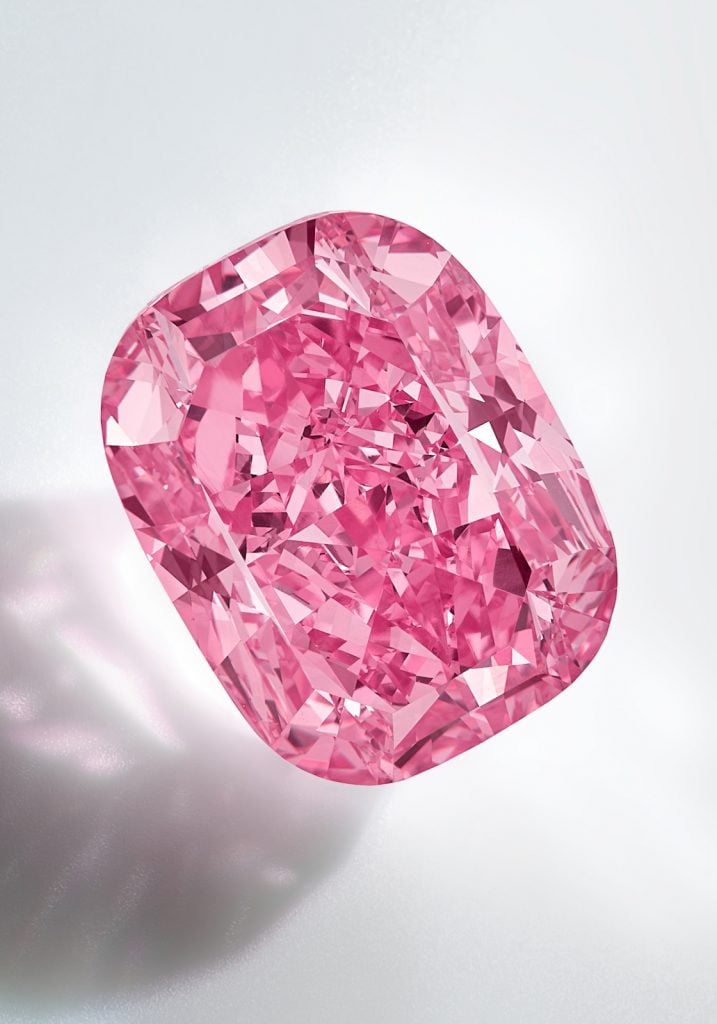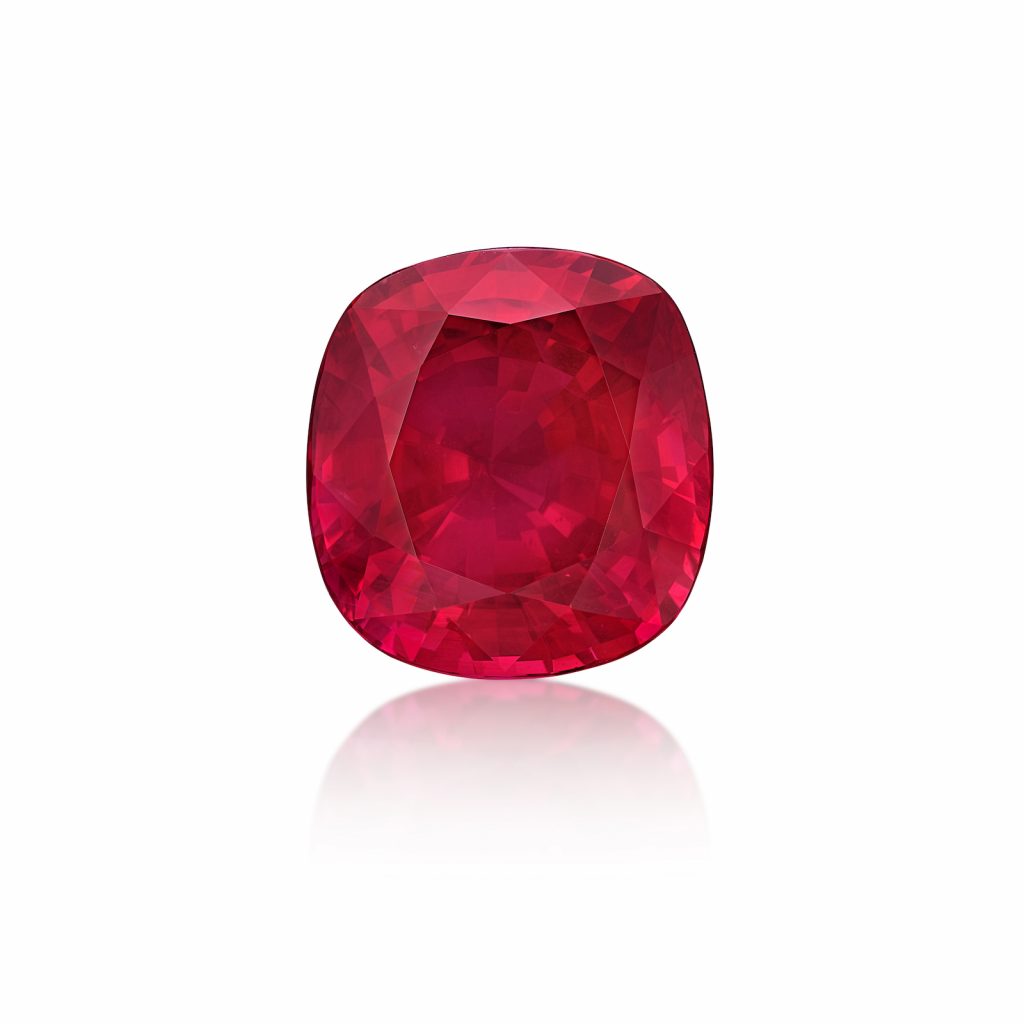Auctions
Sotheby’s Sets Two Gemstone Records for a Ruby and a Pink Diamond, Each Selling for $34.8 Million
This is the first time in history that two stones have fetched prices north of $30 million in a single sale, the auction house notes.

This is the first time in history that two stones have fetched prices north of $30 million in a single sale, the auction house notes.

Artnet News

Sotheby’s New York set two world records for gemstones today, one for a 55.22 carat Mozambique ruby known as the “Estrela de Fura 55.22” and one for a 10.57 carat fancy purplish-pink diamond referred to as “the Eternal Pink.” They fetched identical prices of $34.8 million.
It’s the first time in auction history that two stones have fetched prices north of $30 million in a single sale, the house points out, and the ruby set a record for any colored gemstone at auction. At about $3.3 million per carat, the pink diamond is a new price per carat for the color grade. Both lots were guaranteed to sell and backed by irrevocable bids.
“Today, we witnessed the historic sale of not one, but two of the most exquisite and important diamonds and gemstones to ever hit the auction block,” said Quig Bruning, head of Sotheby’s jewelry, Americas, in a press release.
While declining to reveal what the presale estimates were, the house did indicate to Artnet News that the ruby went to a private collector in the Middle East.
American Gemological Laboratories described the ruby as being of “unequalled uniqueness and importance,” adding that it is “by far the largest ruby of such quality ever produced from Mozambique.”

This 55.22 carat Mozambique ruby is known known as the “Estrela de Fura 55.22.” Courtesy Sotheby’s.
“Estrela de Fura” means “star of Fura” in Portuguese. The name refers to the company that mined the stone and has some nine ruby mining licenses in Mozambique. Just two rubies have ever exceeded $15 million at auction, Sotheby’s says.
The price for the diamond, mined by De Beers at the Damtshaa mine in Botswana, far exceeds the previous high price for a diamond of the same variety, $19.9 million, achieved at Sotheby’s Hong Kong, by a 10.64 carat example.
The Gemological Institute of America described the diamond as “a stunning specimen; one of nature’s great wonders transformed through artistry and ingenuity.”
Because of the “violent and chaotic” events that give rise to a diamond, the auctioneer says, other minerals or inclusions are often trapped within it or cause it to break down into smaller fragments, so it is “unfathomably rare” to find one larger than 10 carats that is free of such impurities. “This is especially true for pink diamonds due to their inherent structural irregularities,” according to Sotheby’s.
More Trending Stories:
Is Time Travel Real? Here Are 6 Tantalizing Pieces of Evidence From Art History